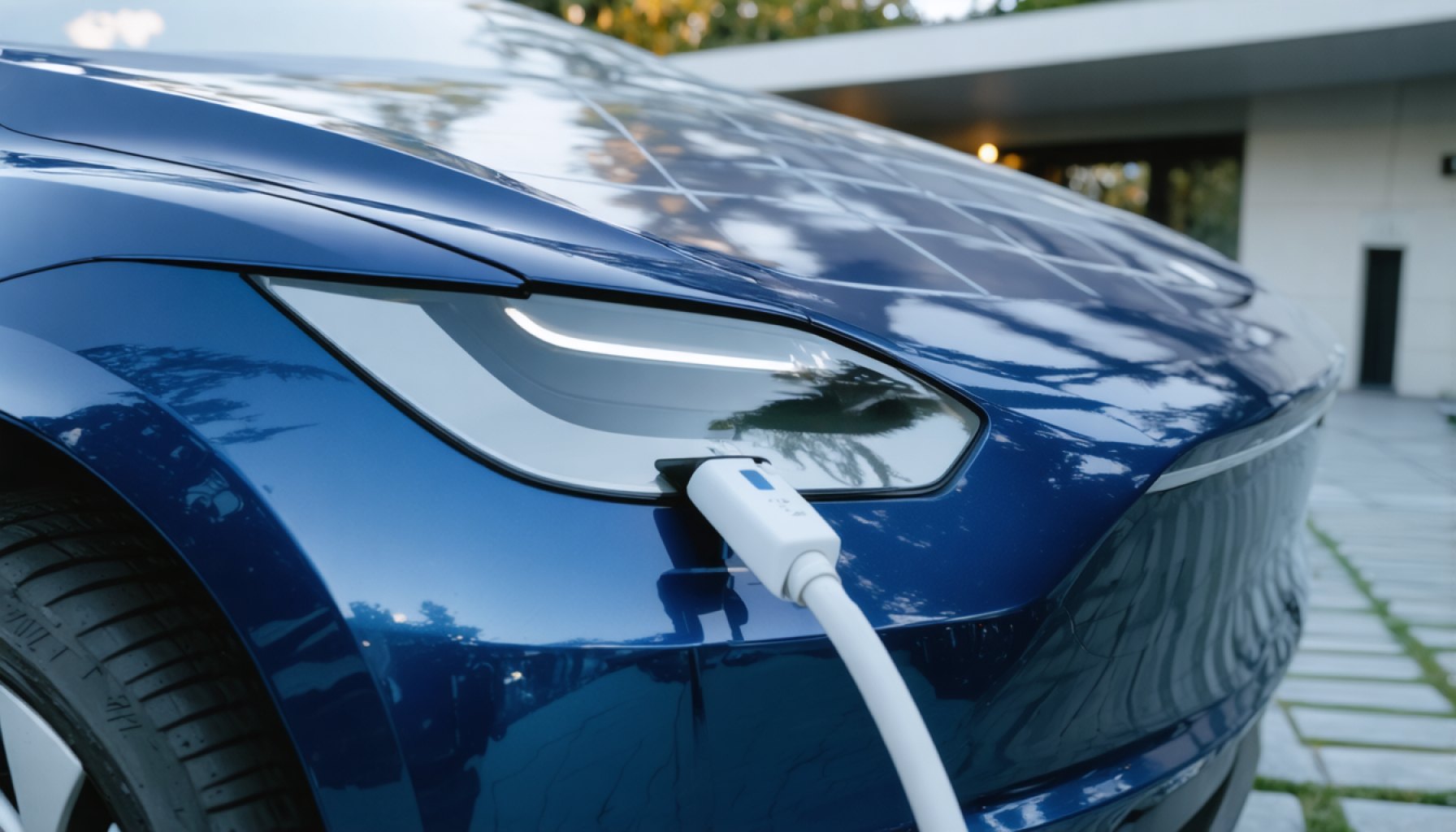- Electric vehicles (EVs) are poised to redefine self-sufficient living through innovations like bidirectional charging.
- Bidirectional charging allows EVs to serve as mobile energy storage units, potentially powering homes and selling electricity back to the grid.
- A typical EV battery can store enough energy to power a home for several days, offsetting electricity costs during peak times.
- Smart home electricity meters and region-specific regulations (e.g., Ireland’s ESB policies) support this innovative energy use.
- Real-world applications demonstrate EV capability during outages, but balance and planning are essential for prolonged disruptions.
- Retired EV batteries offer further potential as home energy storage units, reducing reliance on the power grid.
- This technology enhances resilience and contributes to energy independence, addressing both current and future energy challenges.
Outside, the wind howls and branches sway ominously, but inside, the lights remain bright and steady. Imagine no longer being at the mercy of the grid during power outages. Today’s electric vehicles (EVs) aren’t just cutting-edge transportation; they’re poised to redefine self-sufficient living.
Once considered a futuristic novelty, bidirectional charging has entered the spotlight, especially after events like Storm Éowyn highlighted vulnerabilities in power infrastructure. Homeowners are increasingly curious about tapping into their car’s energy reserves, not just for sustenance during outages, but also to manage their energy costs intelligently.
The allure of bidirectional charging extends far beyond its geeky appeal. With it, a car isn’t just a means to get from point A to point B but becomes a mobile energy storage. Vehicles equipped with vehicle-to-grid (V2G) or at least vehicle-to-load (V2L) technology can feed electricity back to a home or even sell it to the grid. This dynamic use of energy allows homeowners to offset electricity costs by drawing power from the car when rates are high and replenishing it when electricity is cheaper.
To be a part of this energy revolution, a household needs a suitable EV and a smart home electricity meter. While some may worry about potential impacts on their car’s warranty, the good news is that most EV manufacturers are adapting, providing guidelines to ensure vehicles remain in top condition.
Different regions have various regulations. In Ireland, for instance, the ESB is developing policies to accommodate this innovative use of EVs. The average Irish household consumes about 11.5 kWh daily, while typical EV batteries hold between 75 kWh and 80 kWh, suggesting that a fully-charged electric car could power a home for several days.
The reality came live in Limerick, where one proactive EV owner turned a power outage into a weekend project, running his heating system off his EV battery. While he didn’t power his fridge or freezer initially, it demonstrated the potential of EVs during emergencies.
As EV technology advances, everyday scenarios like cooking dinner or streaming a movie during a blackout won’t be a cause for concern. However, balance is crucial. High-demand devices like ovens and electric showers require mindful energy use and may exceed what an EV battery can support simultaneously.
What about longer outages—when two days become three, or more? Planning is crucial. EV drivers are encouraged to familiarize themselves with nearby charging stations and monitor their remaining battery power vigilantly. It might mean a temporary disconnect from home comforts to recharge in a town where power is restored first.
Looking beyond immediate needs, some envision a future where retired EV batteries become home power walls. These energy reserves could mitigate reliance on the grid altogether. Many older EV batteries, even at reduced capacity, are finding second lives as energy storage units, capable of smoothing out peaks in electricity usage and storing cheap, off-peak power.
Innovation like this paves the way for greater resilience, as electric vehicles transform from modern marvels into essential partners in everyday life. Beyond appealing to tech enthusiasts, these applications are vital steps toward energy independence, preparing us to face both anticipated disruptions and the unexpected challenges of tomorrow.
Unlocking the Potential of Your Electric Vehicle: How Bidirectional Charging is Revolutionizing Energy Resilience
Understanding Bidirectional Charging
Bidirectional charging, which includes technologies like Vehicle-to-Grid (V2G) and Vehicle-to-Load (V2L), is redefining the utility of electric vehicles (EVs) by transforming them into mobile energy storage units. This technology enables EVs to not only draw power from the grid but also send energy back to it or directly power a home, offering significant benefits in terms of cost savings and energy resilience.
Real-World Use Cases
1. Emergency Power Supply: In scenarios like Storm Éowyn, EV owners can use their vehicles to power essential home devices during outages. While high-demand appliances like ovens might be impractical, essentials such as lighting, refrigeration, and communication devices can be sustained.
2. Energy Cost Management: Homeowners can mitigate energy costs by charging their EVs during off-peak hours and supplying energy back to their homes when electricity rates are high or supply is low.
3. Sustainability: By reducing reliance on traditional power grids, bidirectional charging promotes the use of cleaner, renewable energy sources, thus contributing to a reduction in carbon footprint.
Market Forecast & Industry Trends
The market for bidirectional charging technology is projected to grow significantly as the demand for EVs increases and as more grid operators and regulators adopt supportive policies. This trend is driven by the dual imperatives of increasing energy independence and reducing environmental impact.
Pros and Cons Overview
Pros:
– Cost Savings: Using stored energy during peak hours can reduce electricity bills.
– Energy Security: Provides a backup power source during outages.
– Sustainability: Supports renewable energy integration.
Cons:
– Initial Setup Cost: Requires investment in compatible EVs and charging infrastructure.
– Potential Battery Wear: Frequent charging and discharging might affect battery lifespan without proper manufacturer guidelines.
FAQs
– How does bidirectional charging work?
Bidirectional charging allows electricity to flow both to and from a vehicle, using the car’s battery to store and supply power as needed.
– What are the regulatory challenges?
Regulations vary by region. It’s crucial to stay informed about local policies, such as those being developed in Ireland, to maximize the benefits of this technology.
– What are the safety implications?
Proper installation and adherence to manufacturer guidelines are essential to ensure safety during bidirectional charging.
Actionable Recommendations
– Check Compatibility: Ensure your EV and home are equipped for bidirectional charging. Consult with your EV manufacturer and a certified electrician.
– Optimize Energy Use: Use a smart meter to track energy consumption and automate charging during off-peak hours.
– Stay Informed: Follow developments in local regulations and incentives that could support bidirectional charging.
– Plan for Emergencies: Keep a list of accessible charging stations and develop a plan for maximizing your EV’s power during extended outages.
By investing in bidirectional charging and energy-efficient home setups, you can greatly increase your household’s energy resilience and contribute to a more sustainable future.
For more on how technology can enhance modern living, visit Consumer Reports.







